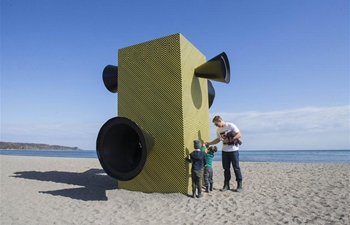WASHINGTON, March 1 (Xinhua) -- The U.S. National Aeronautics and Space Administration (NASA) on Thursday successfully launched the second in a series of next-generation weather satellites.
A United Launch Alliance (ULA) Atlas V rocket lifted off from Cape Canaveral Air Force Station in Florida at 5:02 p.m. (2202 GMT), carrying the Geostationary Operational Environmental Satellite, or GOES-S, for the U.S. National Oceanic and Atmospheric Administration.
The spacecraft then separated from the rocket's upper stage to fly freely at approximately 8:31 p.m. (0131 GMT, March 2) and next up is solar array deployment.
It will arrive at a geostationary position over the United States to provide images of storms and help predict weather forecasts, severe weather outlooks, watches, warnings, lightning conditions and longer-term forecasting, NASA said.
The GOES-S' geostationary status, which means the satellite is always in the same position with respect to the rotating Earth, allows it to hover over one position on the Earth's surface and provide constant vigil for the atmospheric "triggers" for severe weather conditions such as tornadoes, flash floods, hail storms and hurricanes.
The ULA is what it says the most experienced space launch company in the United States with a 100 percent mission success rate.













